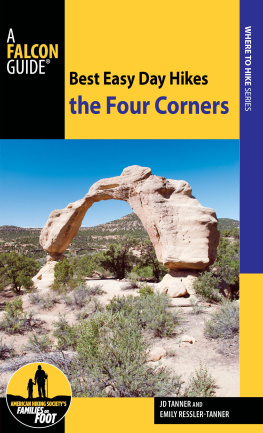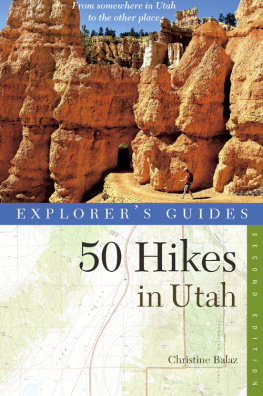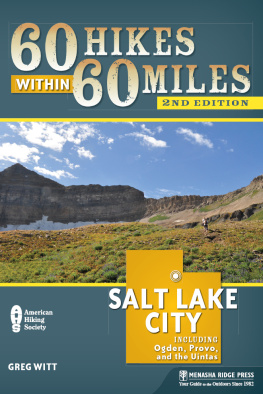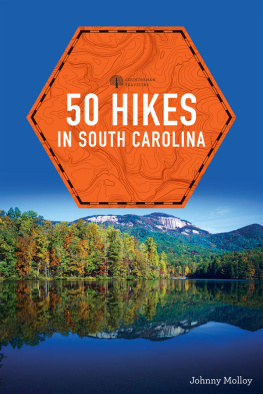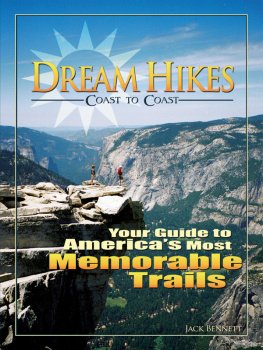Contents
Guide
Page List


AMERICAS
BEST DAY HIKES
Spectacular Single-Day Hikes Across the States
DEREK DELLINGER

To everyone who works to preserve and protect the earths remaining wild places.

A warped, moon-like landscape surrounds Mount St. Helens
CONTENTS

A mossy path crosses near the summit of Mount LeConte in Tennessee
T o introduce a book called Americas Best Day Hikes is, unavoidably, to address the bold claim that youve identified Americas best day hikes. Because that is a very bold claim indeed in a country as vast and varied as the United States. But lets start with this caveat: the title should not be taken too literally. As the author, I can assure you that the book you hold in your hands does not indisputably identify the 50 absolute best day hikes in the United States of America, because such a claim, taken 100 percent literally, would be slightly absurd. There are thousands of incredible hikes in America; thousands of parks and trail systems; and hundreds of thousands of miles of scenic, stunning trail. America is a beautiful and diverse country, containing hundreds of hikes that could have been covered by this book and absolutely warrant the exploration.
But most of us do not have time to explore thousands of miles of trail or hundreds of hikes. Ive had the pleasure of writing two installments for Countrymans 50 Hikes series50 Hikes in the Upper Hudson Valley and 50 Hikes in the Catskills, coauthored with Matthew Cathcartand this style of regional guide is ideal for those who live in or near that particular region or for adventurers who have the time to spend several weeks dedicated to hiking in that area. But there are so many places in America to see that on any given trip youre only likely to visit a handful of them. And after one such trip I found there really was such a thing as information overload. With only a couple days to hike, I didnt want to have to whittle down my choices from a massive list. I wanted to know where to startthe quintessential hikes for that area that I had to hit while I was there.
That, essentially, is the idea behind Americas Best Day Hikes. Think of this as a bucket list for American day hikes. The fact that a hike is on this bucket list does not mean there arent other equally worthy hikes out there or hikes with differing merits, differing reasons they appeal. It simply means that these are hikes every hiker should experience. Most of us will only have a few days to hike while were traveling, will only be able to hit a couple of trails. And in those areas, youll want to knowwhat hikes do I need to do? Take Glacier National Park in Montana, which in recent years has surged in popularity. It is a huge park, and there are many miles of backcountry trail where the casual tourists do not wander. If you have a full week or two to explore Glacier, all of that time dedicated to hiking, you will want to explore that backcountry and create your own hiking route based on your own itinerary. But to start, or with only a few days to build your hiking adventures around, there are a few hikes that absolutely hit the must experience status. You cant, and shouldnt, visit Glacier without hiking the Highline Trail or visiting the Grinnell Glacier. These are two of the finest day hikes in all of America, and either makes for a fantastic place to start before digging deeper.
Even with this elaboration of what I mean by Best Day Hikes, naturally, I still must explain how I came to decide on the 50 particular hikes featured in this book. The short answer boils down to lots and lots of research, and some very tough decisions. A year before I began writing the book, I started researching and compiling a list of potential day hike candidates. I sorted through hiking guides from different regions of the country, consulted hundreds of online articles making recommendations for regional and local hikes, and, finally, talked to hikers from all around the country to hear their personal favorites, their bucket list adventures. Some of these hikers were friends, family, or friends of friends, but many were simply strangers who took time out of their day to reply to an email from a random writer who found them on Instagram, and they very generously compiled a list, often with extremely thorough explanations of their recommendations. Many thanks to all of these kind people who helped me make this book happen by sharing their opinions, expertise, and experiencesa full list of their names is found in the acknowledgments section on .
Still, this research resulted in quite a large list. How do you decide on only 50 hikes, spanning the whole of America? And, an even broader question: what types of hikes should be included? How long, how difficult, how varied? What kind of terrain and what sort of vistas or views should one focus on for any given region, considering the massive variety of the American landscape? What kind of list of best day hikes would make an adventurer who managed to cover them all feel like theyve actually, relatively thoroughly, seen America, experienced America: The Landscape?
First, there were the practical considerations. I would have to set limitations to establish boundaries for the type of hike covered in this book, and most of these were fairly straightforward to determine. When I first conceived of the idea for this book, I naturally looked to see what similar books were already out there. Surprisingly, there were none with the specific project of covering the great American day hikes. All other similar titles tended to focus on long-distance treks: famous trails like the Appalachian Trail, the Pacific Crest Trail, or the John Muir Trail. Even the shorter hikes covered in these volumes tended to be multinight backpacking excursions. Given that I wanted this guide to focus on day hikes, this established the first and most obvious limitation: the hikes had to be short enough that the average hiker could accomplish them in a single day.
As for difficulty, I wanted this guide to be accessible to more than just the hardcore hiker, and while few of the hikes in this guide are what could universally be considered easy, most are accessible to anyone in decent shape, with the proper patience and planning. In some cases I ruled out hikes which I determined were simply too dangerous or too far beyond the ordinary conditions of a day hike. For example, Longs Peak is one of Colorados most popular summits to tackle and one of the quintessential hikes in Rocky Mountain National Park. However, summiting Longs Peak requires powering through 13 miles and almost 5,000 feet of elevation gain, and hikers generally begin the hike around 3 a.m. to avoid the deadly afternoon thunderstorms that reliably roll in during the summer season. The final stretch of Longs Peak is described by the park as more of a climb than a hike, and many of the trails most difficult sections also happen to have sheer drop-offs of several thousand feet. An average of two hikers die on Longs Peak every year.



